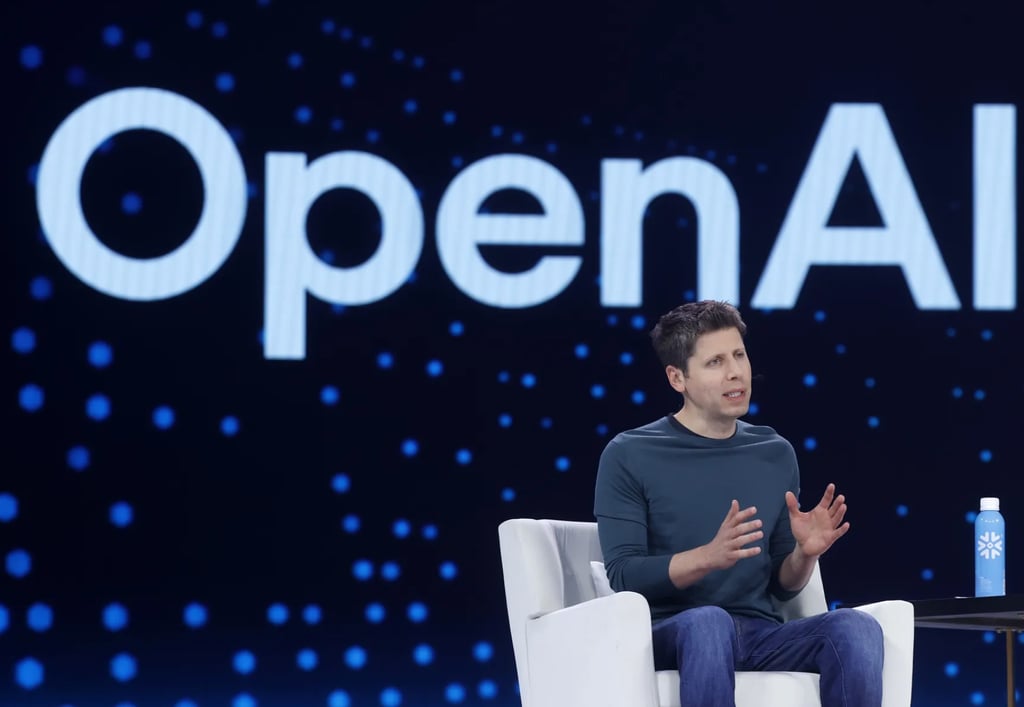OpenAI’s Altman Plans Trillions for AI Infrastructure
OpenAI CEO Sam Altman plans to invest trillions in AI infrastructure, emphasizing ambitious data center expansion despite economic skepticism, to advance artificial intelligence development and services in the near future.
ARTIFICIAL INTELLIGENCETECHNOLOGYTECH INFRASTRUCTUREAI
Eric Sanders
8/15/20254 min read


OpenAI’s Trillion-Dollar Bet: Why Sam Altman is Doubling Down on AI Infrastructure
If you think the AI boom is just a flash in the pan, think again. OpenAI CEO Sam Altman is not just playing around with incremental advances—he’s preparing to pour trillions of dollars into the very backbone that will power the future of artificial intelligence. In a time when many tech companies are tightening their belts and pausing expensive projects, Altman’s bold strategy signals a fierce conviction: to grow AI capabilities at a scale we’ve never seen before, you need infrastructure that’s just as monumental.
The Vision Behind the Spending Spree
Sam Altman’s vision isn’t a subtle one. During recent statements, he laid out plans to massively expand OpenAI’s data centers and computational resources. This isn’t merely about building bigger server farms; it’s about constructing vast digital ecosystems capable of supporting the next wave of intelligent systems that will redefine industries, economies, and everyday life.
Altman is aware that skepticism surrounds such ambitious investments, especially with economic uncertainties looming. Yet, his approach is rooted in a belief that AI’s potential is so transformative, the time to invest is now, not later. "We’re talking about trillions of dollars to build the infrastructure that will power AI for decades to come," he told Bloomberg.
What does this kind of infrastructure look like? To give you a sense, it means scaling operations across multiple continents, building data centers equipped with cutting-edge chips optimized for machine learning tasks, and ensuring these facilities run with efficiency that can sustain both environmental and economic demands. It’s a mission on a scale that makes most corporate investment plans look modest.
Why Infrastructure is the Real Bottleneck in AI Progress
For all the hype about GPTs, chatbots, and generative art, the underlying challenge that rarely gets enough spotlight is infrastructure. AI models like ChatGPT or DALL-E are just the tip of the iceberg. The real game is in the computational power and data pipelines that feed these models — raw muscle and bandwidth that determine how fast, accurately, and economically AI can evolve.
Think about it: Training a cutting-edge AI system requires massive amounts of computing power running around the clock. One recent estimate shows that training large language models consumes gigawatt-hours of electricity and requires tens of thousands of GPUs. Without adequate infrastructure, progress stalls.
This is why Altman’s trillion-dollar commitment matters. It’s not a reckless splurge but a foundational bet that controlling and expanding AI infrastructure is key to maintaining a competitive and innovative edge. In a very real sense, whoever owns the infrastructure owns the future of AI development.
What This Means for the AI Industry and Beyond
OpenAI’s eye-watering infrastructure spend will inevitably ripple across tech ecosystems and global markets.
- Accelerated AI Innovation: More data centers and computational capacity mean faster experimentation and iteration cycles. This translates into better models, smarter algorithms, and more sophisticated AI applications reaching users quicker.
- Pressure on Competitors: Other tech giants and AI startups will need to ramp up their infrastructure investments to keep pace. This could lead to a new arms race focused on efficiency, speed, and scale of AI hardware deployment.
- Economic Uncertainty vs Strategic Vision: Despite looming fears of inflation, slow growth, or recession, OpenAI’s move reflects a long-term play that bets on AI’s capacity to unlock new productivity waves and economic opportunities.
- Environmental and Energy Considerations: Large-scale data centers consume significant energy resources. Altman’s plan includes investment in sustainability efforts to align infrastructure growth with responsible energy use, a reminder that AI’s future isn’t just about power but also about planet.
Lessons for Those Invested
Altman’s audacious infrastructure investment offers a tangible lesson for anyone in technology or innovation-driven fields:
- Think Bigger Than Short-Term Trends: While it’s easy to react to short-term market fluctuations, strategic bets that look to a decade or more ahead drive real transformation.
- Infrastructure Is a Strategic Asset: Technology breakthroughs depend on reliable, scalable, and efficient infrastructure. Investing there isn’t glamorous, but it’s indispensable.
- Preparing for Scale Means Planning for Complexity: Building infrastructure isn’t just about more servers—it demands coordination across hardware development, cooling technologies, energy sourcing, and regulatory environments.
- Sustainability Must Be Part of the Equation: Ambitious projects today must consider their environmental impact to avoid alienating stakeholders and undermining long-term viability.
Testimony to Bold Vision
Watching the tech sector swing between hype and disappointment, I’ve learned to appreciate when leaders make decisive calls that don’t just chase the next shiny gadget but reinforce the foundation itself. Altman’s determination reminds me of the early days of the internet, when visionaries invested heavily in laying fiber optic cables and building data centers, efforts that seemed costly and uncertain at first but paved the road for everything that followed.
If you work in tech or strategy, this is a moment to stop and reflect: where is your infrastructure investment, your foundation-laying, your long-game thinking? Because in the end, the flashiest AI model means nothing without the terra firma to support it.
How Will We Define Infrastructure in the AI Era?
Sam Altman sees infrastructure as sprawling data centers and arrays of GPUs. But infrastructure in the AI age isn’t just physical hardware. It’s also:
- The data ecosystems that feed models
- The frameworks and tools that allow AI to be built and deployed safely
- The talent and regulatory environments that shape how AI integrates into society
So the question becomes: as AI evolves, how do we define the new infrastructure required, not just in terms of machines and money but values, ethics, and societal integration?
And perhaps most poignantly, how will decisions made today about infrastructure shape the world we live in tomorrow?
In an era where artificial intelligence is poised to transform everything, the massive investments in infrastructure tell a story not just of technology, but of priorities and vision. It is worth asking: who will build this future, and at what cost?
Efficiency
Transform your workflows and reclaim your time.
Contact Us
Need A Custom Solutions? Lets connect!
eric.sanders@thedigiadvantagepro.com
772-228-1085
© 2025. All rights reserved.
